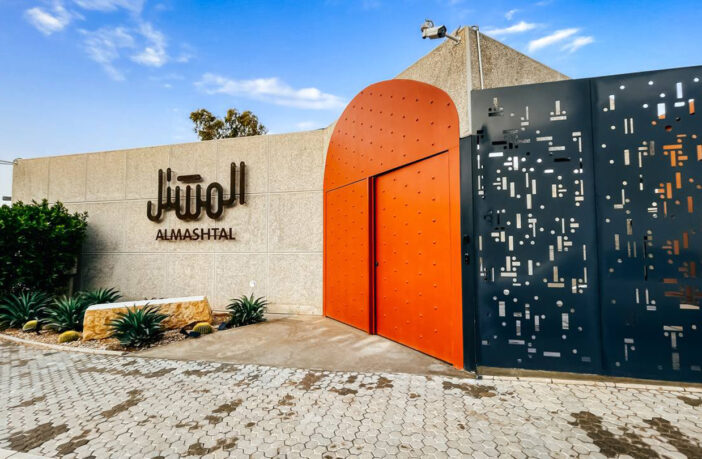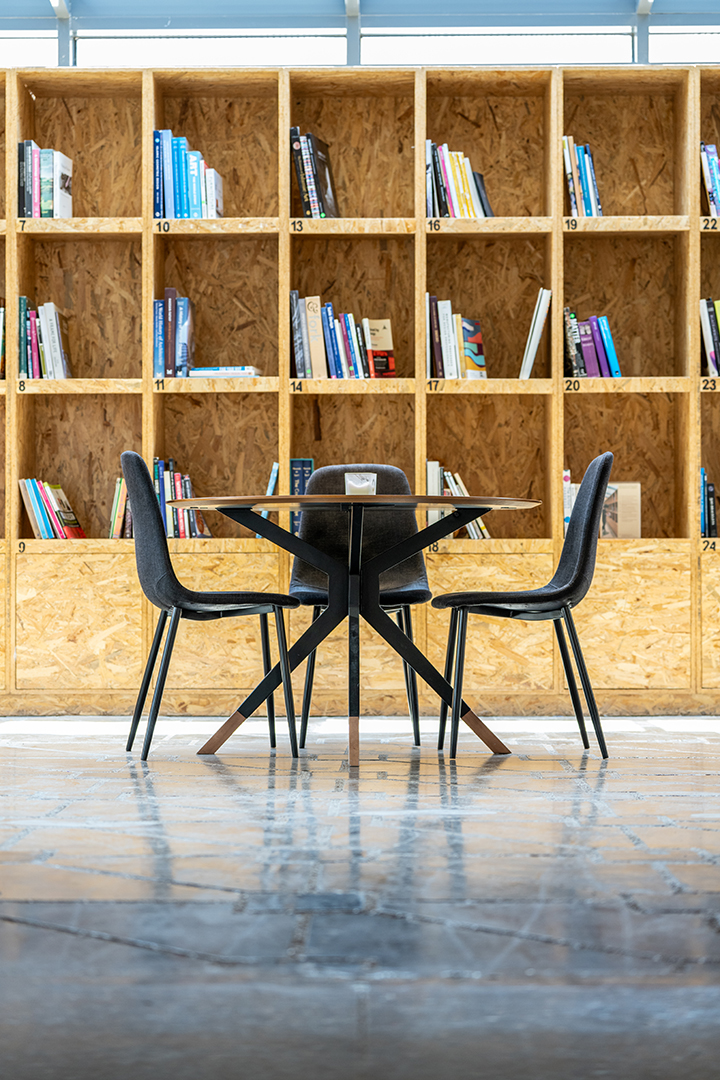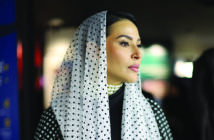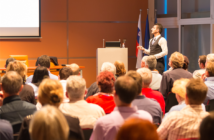Rukun and AlMashtal are separate organization with different mandates but a shared vision. AlMashtal is located in the Diplomatic Quarter and serves as a platform that supports and develops creative minds helping them grow into professionals who can thrive in the market. Rukun is not a physical space but an organization that focuses on strategy, policy and ecosystem level work, while AlMashtal operates on the ground.
In this context, Saudis and AlMashtal have a unique opportunity to engage with a vast international cultural palette in the Diplomatic Quarter. This exceptional setting enables a special connection with the world and emphasizes our shared humanity, all while supporting innovative ideas and long-term infrastructure development.
Recently, I had the great privilege of sitting down with Princess Nourah Bint Saud bin Naif bin Abdulaziz Al Saud, a visionary woman who has traveled far from her roots to return and make a unique contribution to the development of Saudi Arabia.
Before we dive into AlMashtal and its added value to the Saudi creative community, please share with readers your connection to art and design that led to the creation of Rukun and AlMashtal.
Art has always been part of my life. My mother loved it, and still does to this day. Our home was filled with art that my siblings and I created. We grew up with this energy, and choosing to study art and design felt so natural. I moved to London for university, where I spent years immersed in Western history and art. Yet when I came back to Saudi, I realized how little I knew about my own roots, my history, my culture, and heritage. I felt this strong need to reconnect and understand where I came from.
That’s when I founded Rukun in 2013 as my design studio. It started as a way for me to explore Saudi through design. To be curious, learn, explore and experiment and turn my vision into tangible work. It wasn’t easy. The creative landscape here was still developing and resources were scarce. Many of my ideas had to be produced abroad which was expensive, slow and frustrating as a recent graduate who simply wanted her designs to proudly say “Made in Saudi”.
Through Rukun, I began to see a bigger picture, the challenge wasn’t just making a single piece of furniture or design. It’s that we lacked the support systems and infrastructure for creativity to truly take root here. So, overtime Rukun shifted from designing objects to designing ecosystems. Building models and frameworks that help the entire creative sector to grow.
Later in 2019, I partnered with Alaa Ghanimah, who shared my belief that Saudi talent deserved more than passion alone. It needed nurturing, access, and opportunities to thrive. Together we created AlMashtal as a natural extension of Rukun, turning our ideas into a space where creators could actually build, connect and grow into professionals ready to make an impact.
Now, please introduce Rukun and AlMashtal and their message to the creative world.
What Rukun and AlMashtal are saying is that creativity is not an accessory to life; it’s a force that shapes it. The creative industries are how we tell our stories, how we carry our heritage forward, and how we make sense of the world around us. They make our lives richer, spark understanding between people, and they have real economic value that is often underestimated by both those inside the ecosystem and those looking at it from the outside.
Our work is about making this value visible and undeniable. We want to help build a sector where creativity isn’t a side note, but a driver of cultural, social, and economic growth. Rukun works on the long-term structures and frameworks that make it possible, and AlMashtal operates on the ground, supporting creators directly.
We are also not the only ones hoping to see this transformation happen; there are many incredible people and initiatives pushing in the same direction. Our role is to be a catalyst, a companion, and a supporter in that journey.
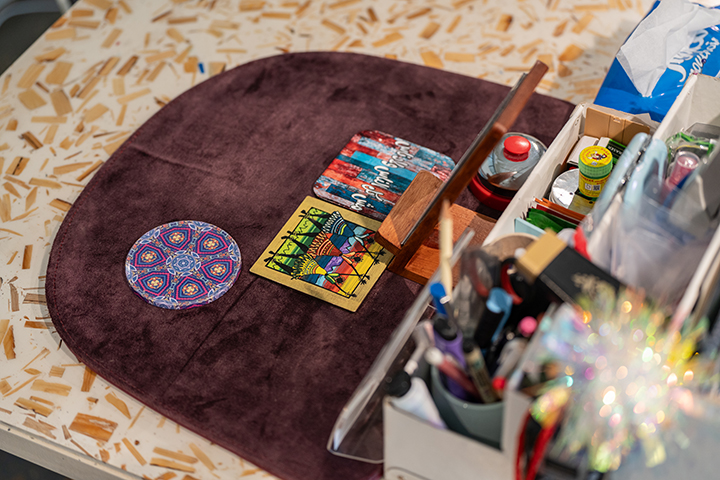
The AlMashtal placement itself is very unique. When and how was the idea for this placement born?
Finding the right home for AlMashtal took time. We wanted a place that had a soul, a story, and a connection to the kind of creativity we believe in. When we found this old primary school in the Diplomatic Quarter, it felt right.
We loved that it was once a place for children, where curiosity, innocence, and free creativity used to live. It carried an energy that we wanted to preserve and build on. Architecturally, too, it had significance. Built in the late 70s when many Korean firms were shaping the Saudi infrastructure. It is a reminder of an era of growth and experimentation in the Kingdom.
For us, restoring this building wasn’t just about creating a home for AlMashtal. It was about proving a point: old spaces hold value, sometimes even more than the new ones. It has layers of history, meaning and memory that can inspire future generations. We wanted AlMashtal to embody that message from the ground up.
As obvious as it may sound, I would appreciate your opinion on how a creative community contributes to the country’s development.
Creative communities do more than create, they have the power to transform the places they live in. When a creative community is active in a neighborhood, it brings new energy, new ideas, new opportunities. We have seen countless times how these places can revive forgotten and underused spaces and turn them into vibrant places where people want to gather, learn, and build.
They also have a ripple effect socially. A creative community opens doors, inspires and creates pathways for people from different walks of life to imagine different realities for themselves. It strengthens pride, connection, and a sense of belonging. In that sense, creative communities don’t just add cultural value, they regenerate urban spaces and uplift entire communities, leaving a lasting mark on both the people and the city around them.
What do you believe is still missing in the creative sector today, and what are you most focused on building to address it?
Creativity in Saudi today is everywhere; you can feel the energy and see people putting their ideas out there. But what is missing in my view is depth and specialization. Too often, we stay in familiar waters, thinking of creativity only in its broadest forms: the fashion designer, the film director, the artist, the musician. But each of these industries is made up of many professions, skills, and disciplines that rarely get the spotlight.
We need people who dream of becoming the lighting designers, set builders, pattern makers, sound engineers, and the list goes on. These are the people who make the creative industries truly sustainable and competitive. Without them, we risk having beautiful ideas but not enough expertise to bring them fully to life.
Much of your work focuses on shaping long-term infrastructure for the creative sector. How do you see this evolving in the years ahead—especially as new tools, technologies, and industries emerge?
I’ve always seen technology as a tool; it cannot replace creativity or the thinking behind it, but it helps us bring our ideas to life faster, more efficiently, and sometimes in ways we didn’t imagine before. From AI to a simple sewing machine, these tools are here to support us, not define us.
What matters now is how we as creators use them responsibly. We need to create work that is grounded in our knowledge, our ethics, and the originality of our work while still embracing what technology can make possible.
The Diplomatic Quarter is all about diplomacy and mutual understanding. Now, how does the creative community at the heart of the DQ contribute to Saudi foreign policy, diplomacy, and mutual understanding?
Being in the DQ has given us something truly special; it is where cultures naturally meet and conversations between different worlds happen. Creativity thrives in these kinds of environments because diversity of voices, experiences, and views enriches the creative work.
Through AlMashtal, we have been able to show that creative spaces can be part of this dialogue. When people from different countries experience Saudi creativity, they see a more human and personal side of who we are. And in turn it reminds us of our own roots while opening our minds to world. This, to me, is a quiet but powerful form of diplomacy.
The Kingdom is steadily moving towards its Vision 2030 with comprehensive modernization. Please discuss the role of modern concepts in creativity in preserving the heritage and ancestral legacy of traditions.
For me, preserving heritage is not about keeping it frozen in time. It is about understanding its origins and allowing it to live on in meaningful ways. Creativity gives us the tools to document, reinterpret, and share our culture with the world.
I always say that when a person knows their core and roots deeply, like why a word is written in a certain way, what a craft once meant, you don’t only create something beautiful but also powerful. Today, with all the tools and platforms in our hands, we can expand our reach, use multiple platforms, and connect with new audiences. It is how we make sure heritage isn’t just remembered, but continues to inspire generations to come.

